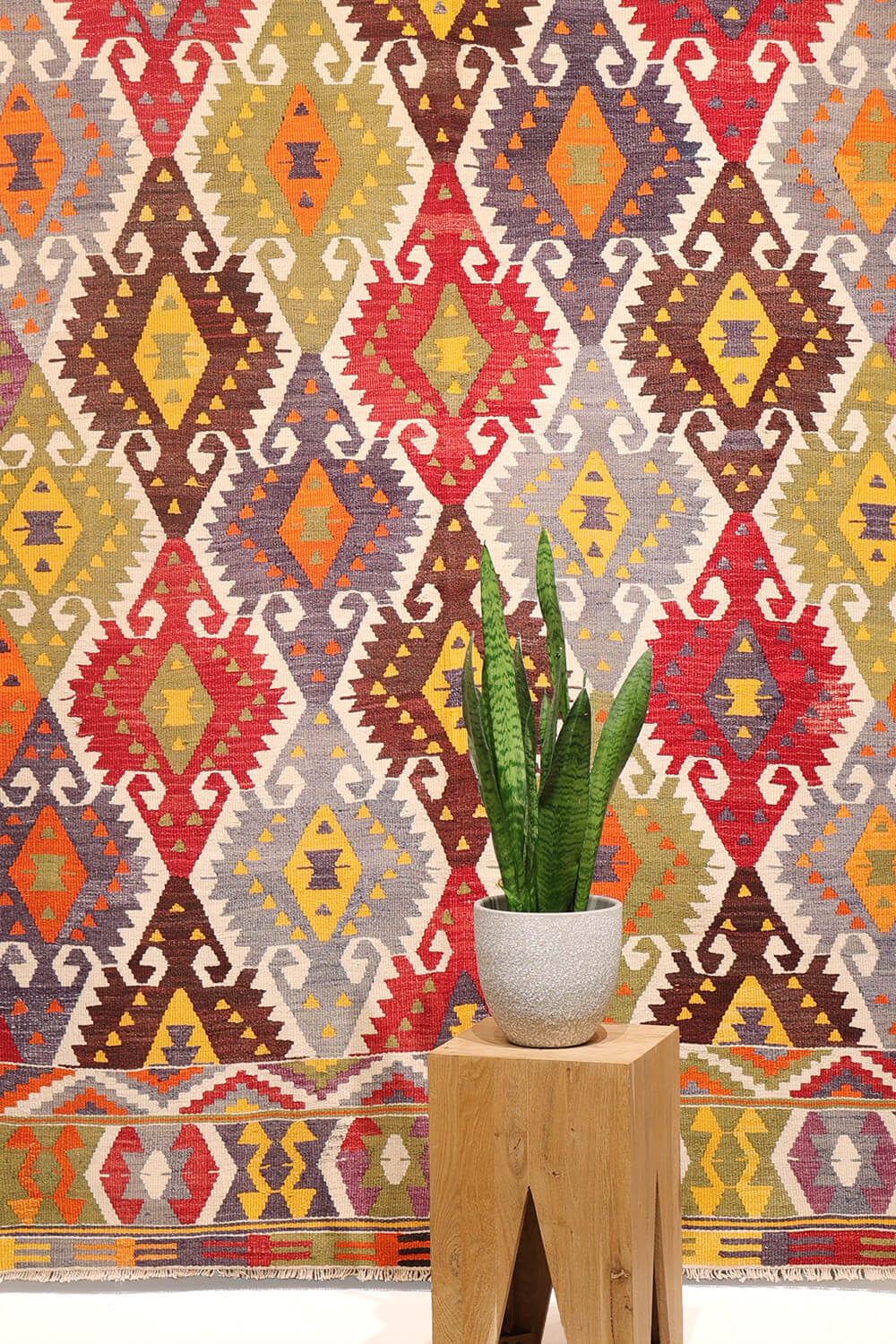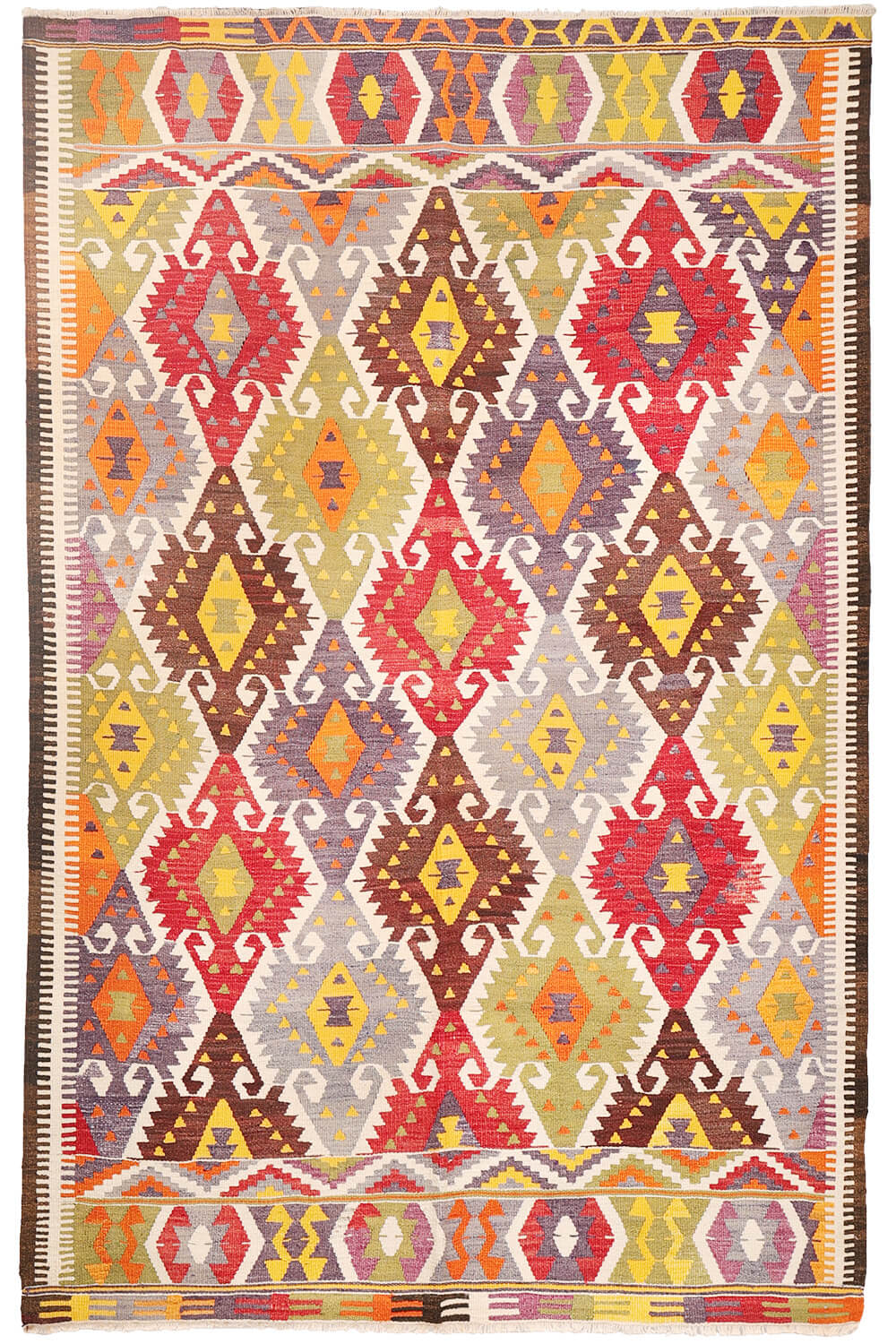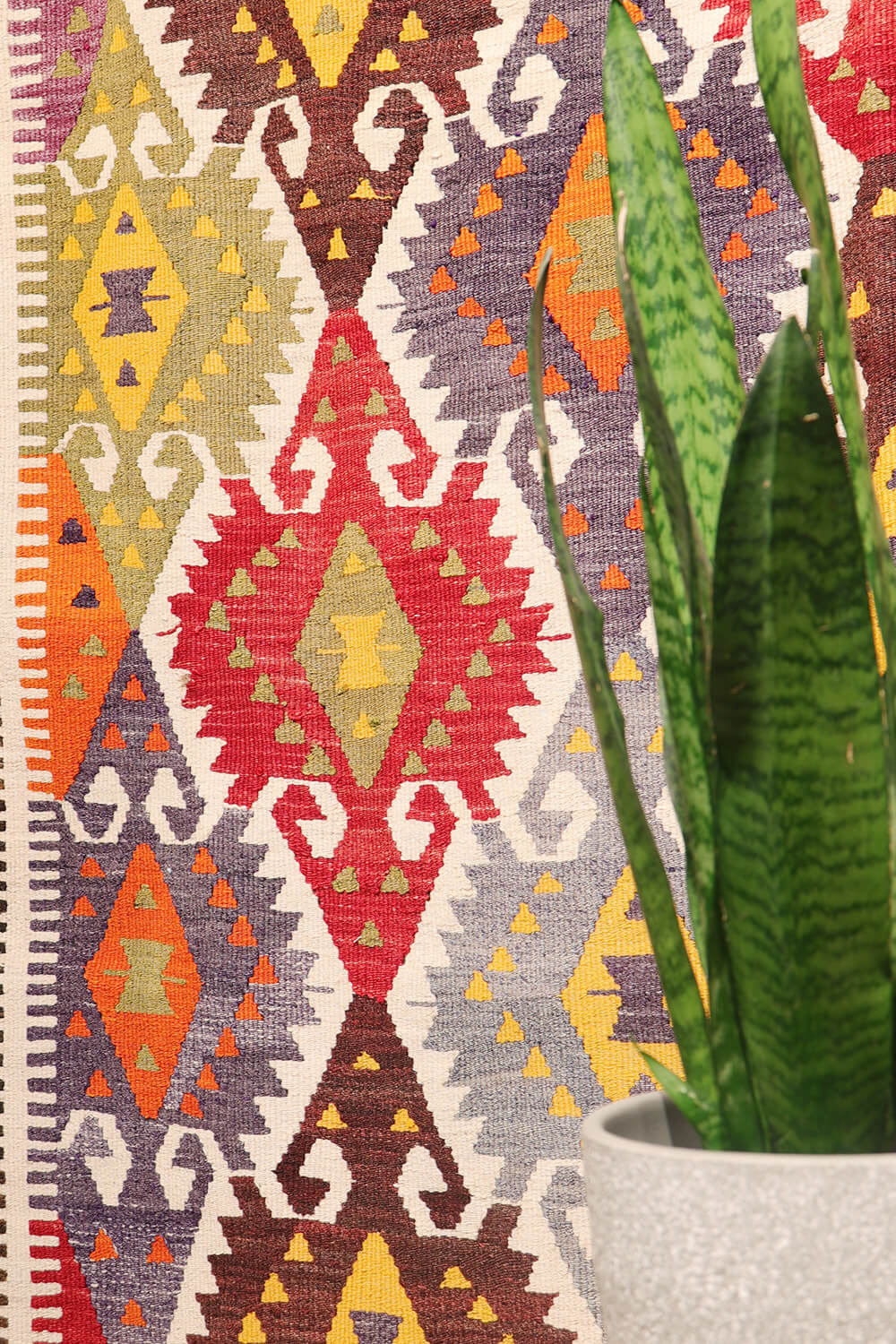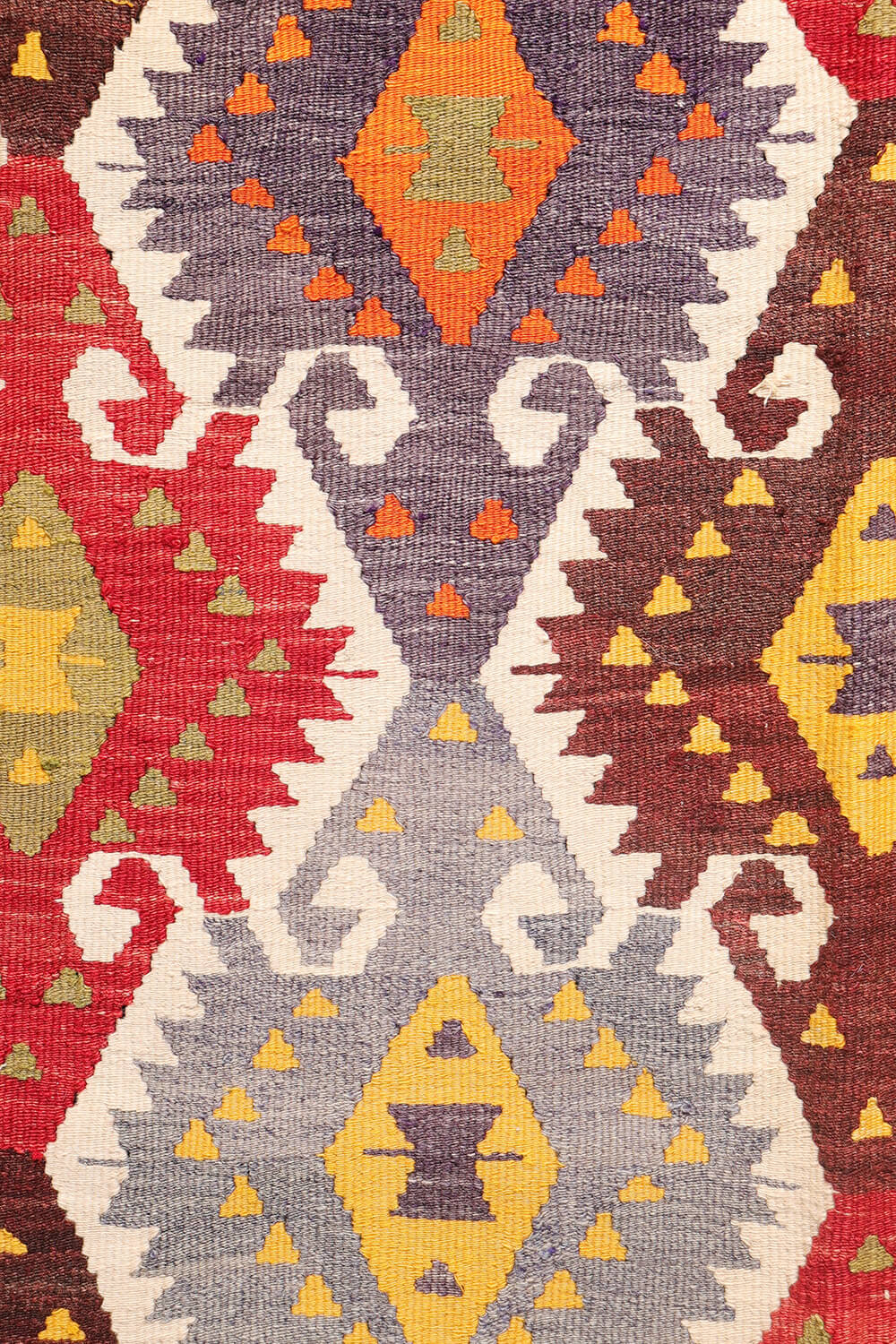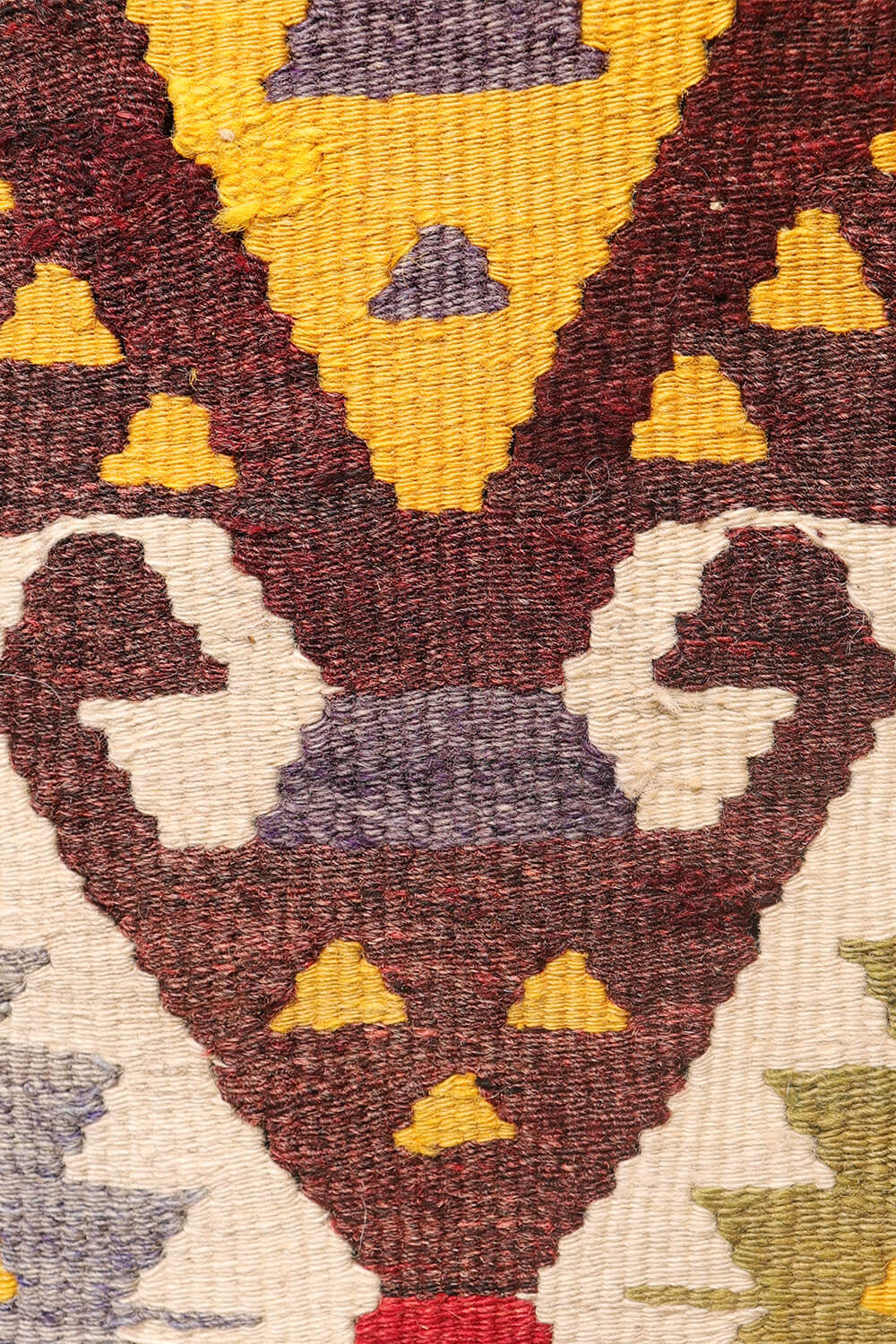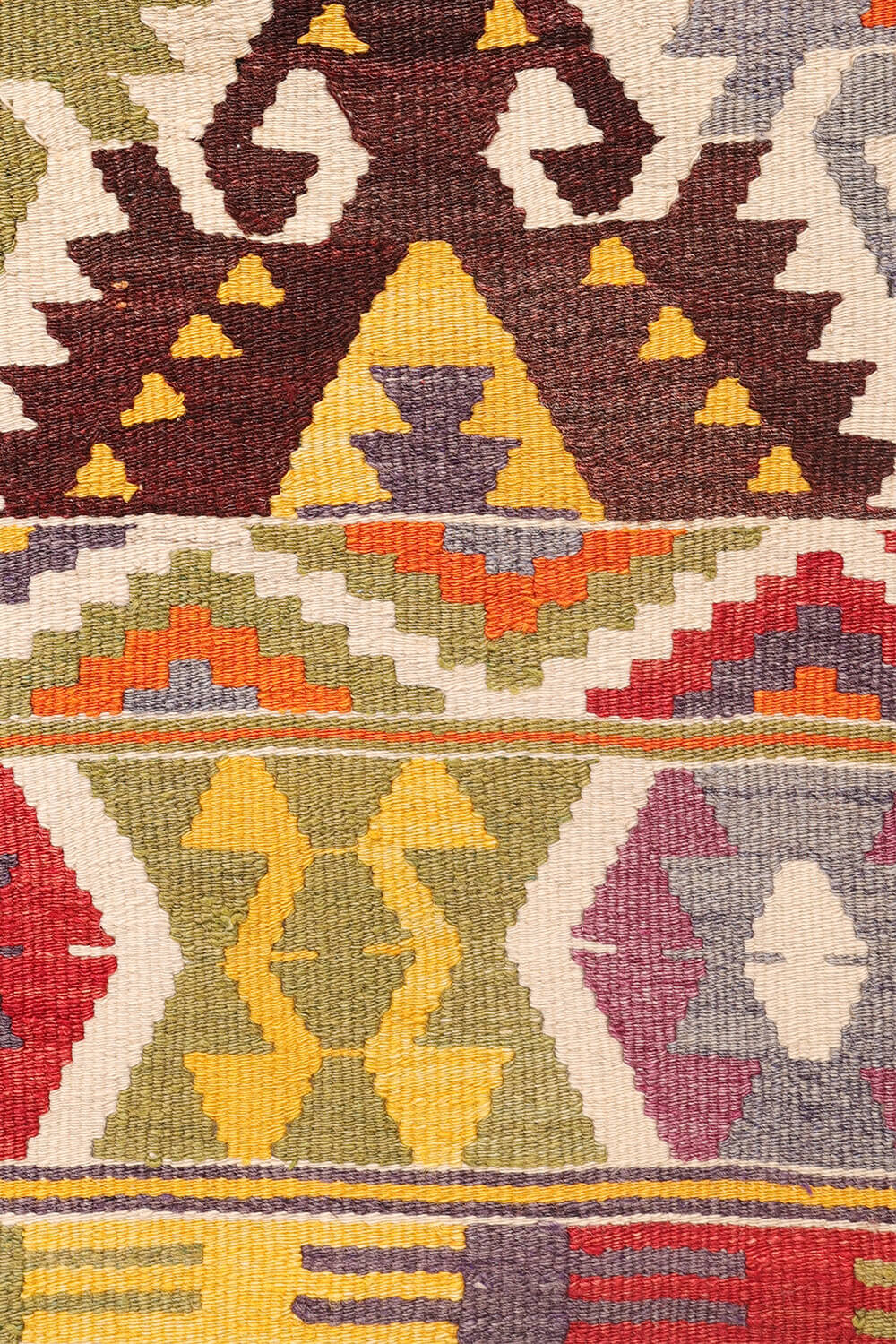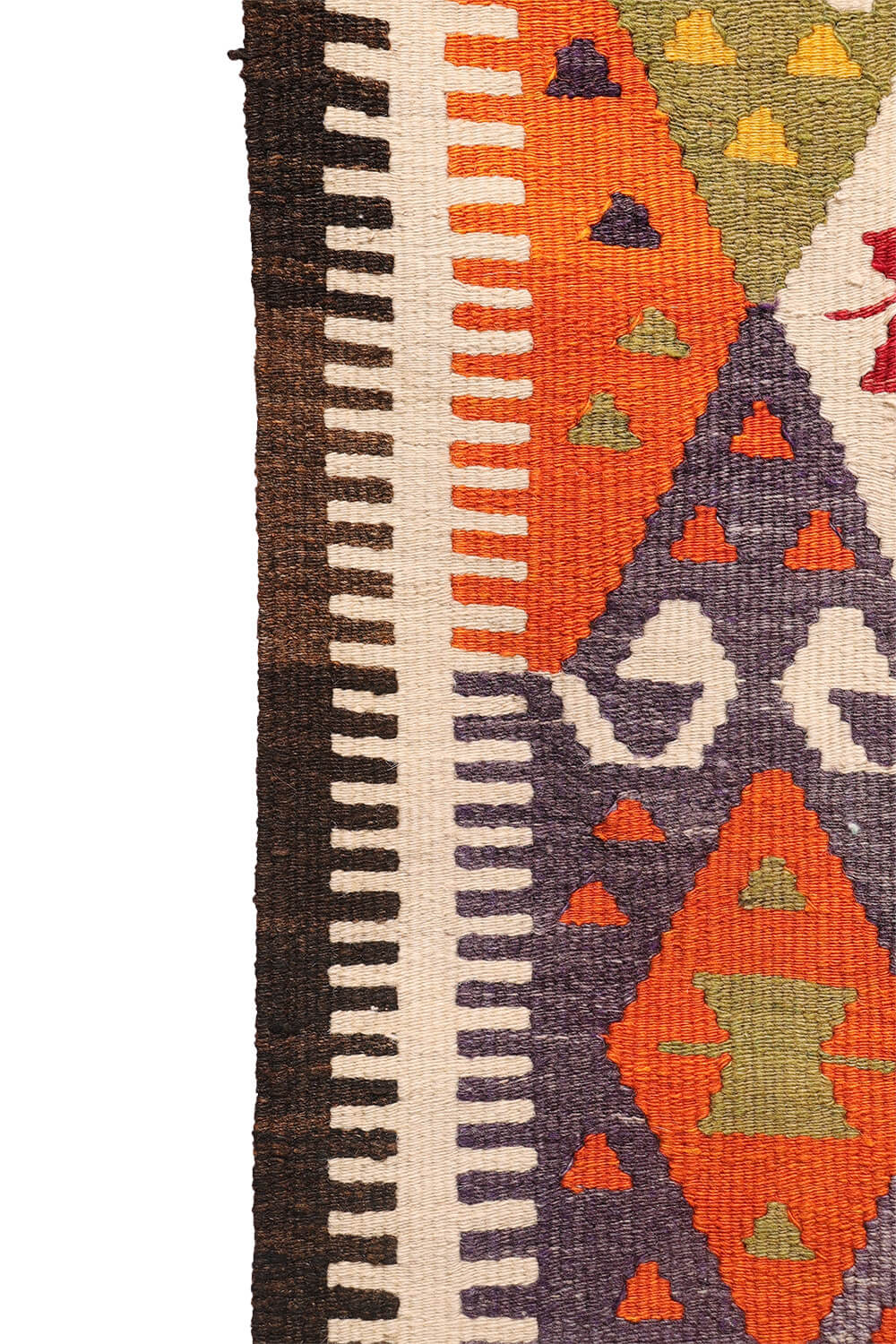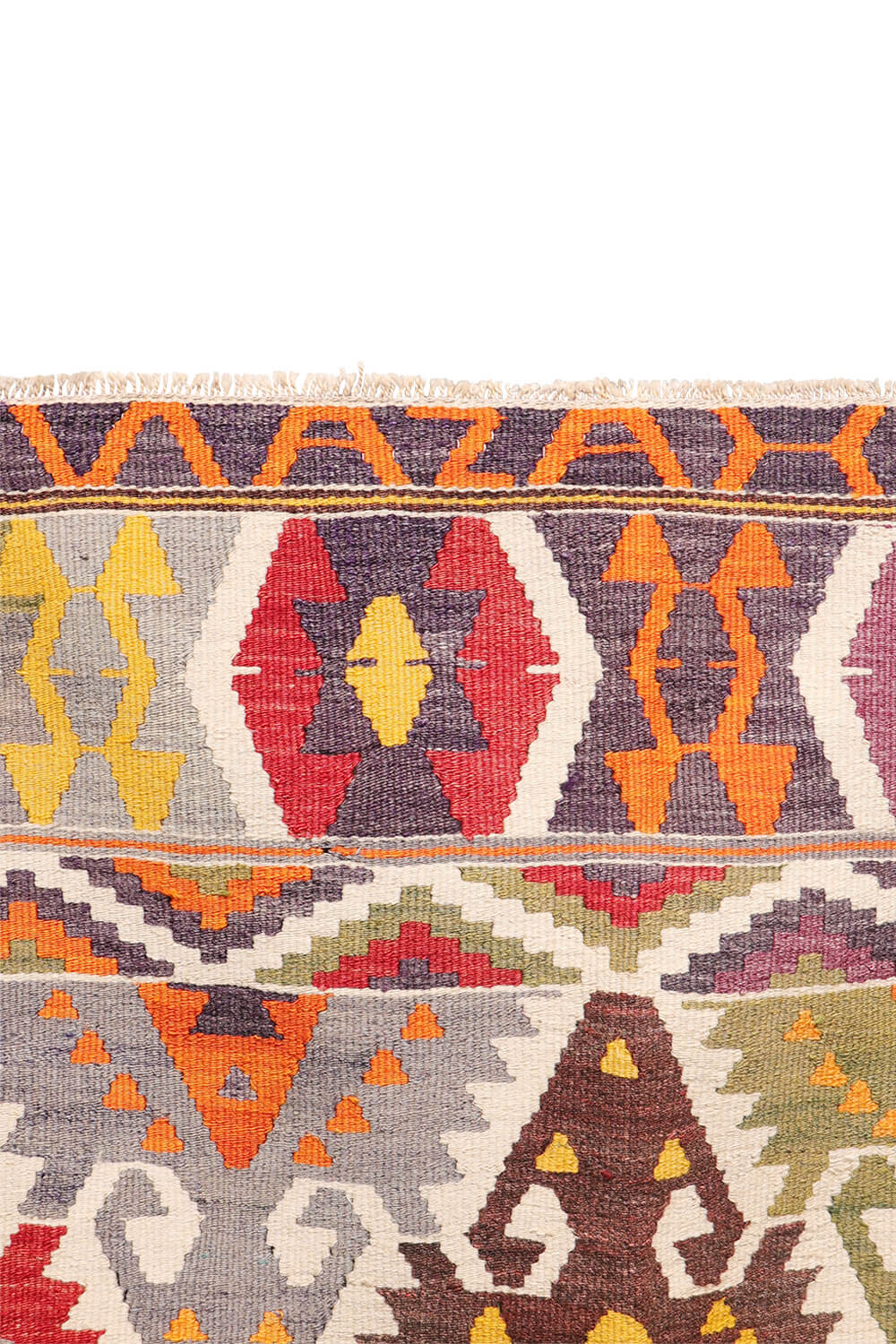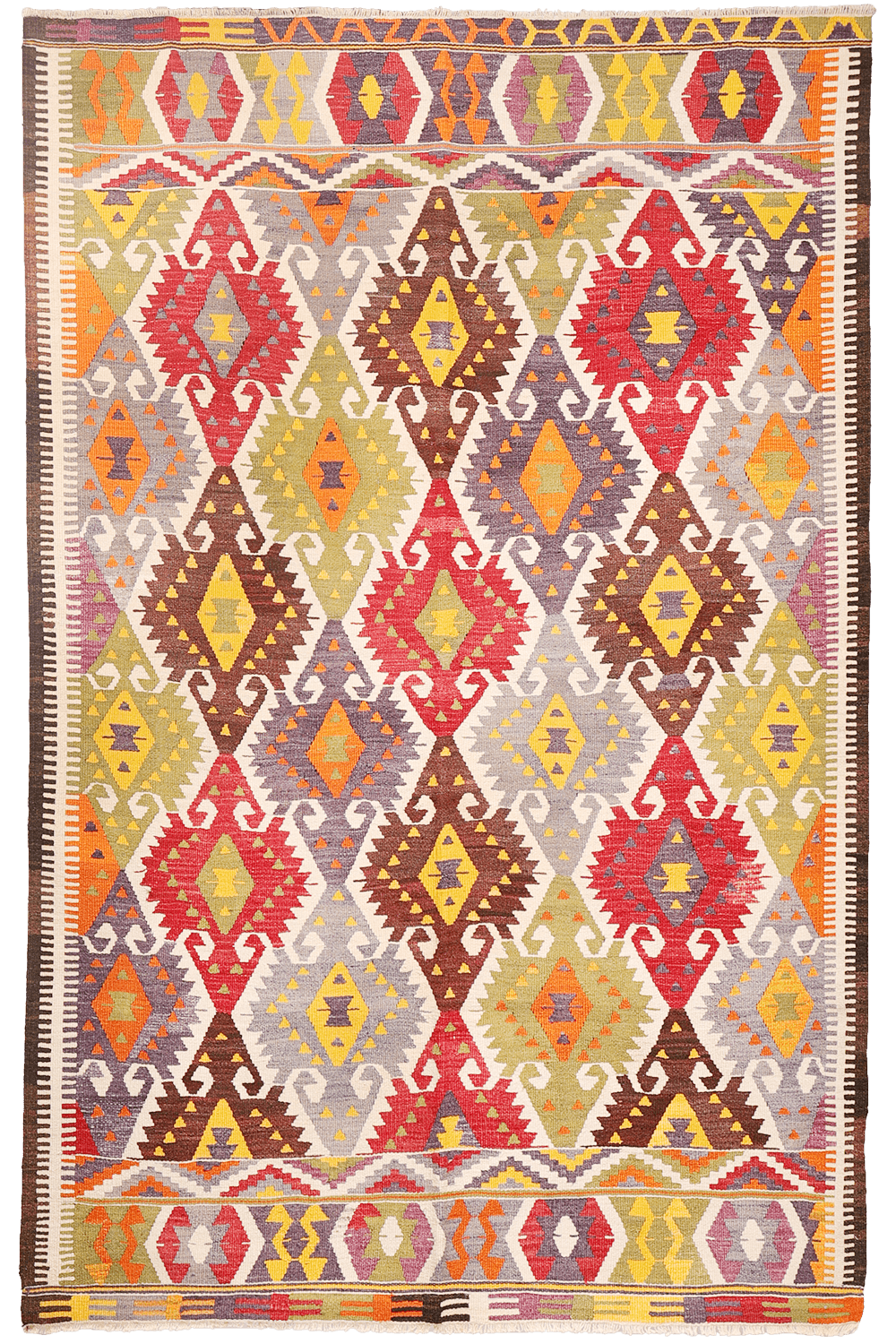1,500.00 €
Vintage Barak Kilim with Elibelinde Motifs
This striking vintage Barak kilim features a bold, deep-toned design centered around the iconic Elibelinde (Mother Goddess) motif. Woven in a mirrored pattern, these symbolic figures fill the entire main field, their rich colors standing out vividly against a soft white wool background.
At the top of the kilim, a series of woven letters adds a personal touch—possibly the name of the weaver or, if this was created as part of a dowry, the names of the couple it was made for.
A beautifully balanced and thoughtfully crafted piece, rich in cultural symbolism and artisanal detail.
Material: 100% hand-spun sheep wool
Size: 250×165 cms
Origin: Barak, Turkey
Date of weaving: 1970s
Elibelinde – “Hands on Hips”
Elibelinde, in Turkish, literally means “hands on hips.” This motif represents a pregnant woman standing in that posture to relieve the weight on her back. In many of the tribes and most of the villages we visited, we observed this major symbol of fertility—one of the three great concerns reflected in kilim iconography, alongside fecundity and protection.
The widespread presence of the “hands on hips” motif in Anatolian weaving links it directly to the Mother Goddess, the central deity of the proto-urban site of Çatalhöyük (7000 BCE), where many figurines depicting her have been unearthed—sculpted from clay or painted on walls.
While the myth of the Mother Goddess appeared as early as the Paleolithic era (30,000–20,000 BCE), particularly in southwest France, the Rhine Valley, Malta, and even Siberia, it seems to mark the shift from the wandering life of hunter-gatherers to the more settled or nomadic lifestyle associated with agriculture and herding. The Mother Goddess symbolizes not only human fertility but also the fecundity of the nourishing earth.
Primitive Matriarchy
Every visit we made to Anatolia’s nomadic communities felt like stepping back in time. Little has changed in their way of life since the early days of pastoral nomadism, which emerged over five thousand years ago. What always struck us was the prominent—often surprising for the Muslim world—position of certain women. It’s a living echo of the ancient matriarchy that once centered on the Mother Goddess.
Even recently, in the small town of Avanos, in Cappadocia, one could witness a rainmaking ritual held during severe droughts: a robust woman named Afife, known to all as Afife Aba (“Mother Afife”), would walk through the streets with a sieve on her head. From their windows above, villagers would pour jugs of water over her. Her size symbolized fertility, and the water symbolized fecundity—two key themes of the old Mother Goddess cult.
Finally, it’s worth noting that elibelinde is the only traditional anthropomorphic motif found on kilims. In primitive societies, only the Mother Goddess was depicted in human form. This provides yet another clear and indisputable link between this motif and its ancient origin.
From “symbolique des kilims” by Ahmet Diller
1 in stock
Additional information
| Weight | 6.8 kg |
|---|
Subscribe and receive the lastest news
